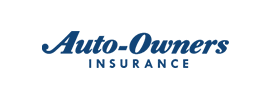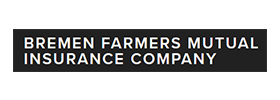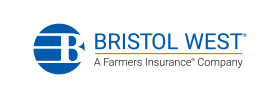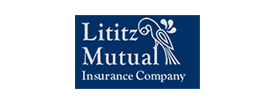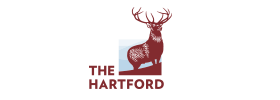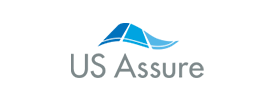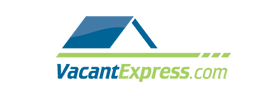Welcome to AHI Group’s Blog, where we strive to keep you informed about all things insurance-related. Today, we delve into an important concept that affects both individuals and businesses alike: the hard insurance market. As insurance professionals, it’s crucial to understand this term and its implications, especially during times when the insurance landscape becomes more challenging and unpredictable.
In simple terms, a hard insurance market refers to a period characterized by increased premiums, reduced coverage options, and stricter underwriting guidelines. It’s a phase when insurance carriers become more cautious and conservative in their approach due to a variety of factors that can impact the overall insurance industry. During these periods, both insurance providers and policyholders face unique challenges as they navigate through the changing dynamics of the market.
Let’s address some key challenges of a hard insurance market, how insurers are responding, and what that might mean for you as a policyholder.
What Causes a Hard Insurance Market?
A hard insurance market is typically triggered by a combination of internal and external factors that create a challenging environment for insurance carriers. Understanding these causes can provide valuable insights into the dynamics behind the market shift.
External factors that contribute to a hard insurance market include natural disasters, such as hurricanes, earthquakes, or wildfires, that result in a higher volume of claims and increased losses for insurance companies. Economic downturns or recessions can also strain the industry as financial instability affects insurers’ investment returns and overall profitability.
Internally, insurance carriers may experience reduced capital reserves due to underperforming investments or inadequate premium pricing in the past. Regulatory changes, stricter accounting standards, or legal judgments can also have a significant impact on insurers’ financial stability and their ability to offer affordable coverage options.
Combined, these factors create an environment where insurance companies must reassess their risk appetite, adjust pricing models, and tighten underwriting guidelines to restore profitability. While a hard insurance market can be challenging for policyholders, understanding the underlying causes can help navigate these periods with greater awareness and preparedness.
Are We in a Hard Insurance Market in 2023?
Determining whether we are currently in a hard insurance market can be a complex task. While the insurance market can experience fluctuations, transitioning from a soft market to a hard market isn’t always easy to pinpoint. However, there are certain indicators that can help us gauge the current state of the market.
One of the key signs of a hard insurance market is an overall increase in insurance premiums across various lines of coverage. This rise in premiums is typically driven by factors such as a surge in claims, higher reinsurance costs, or broader economic conditions. Additionally, insurance carriers may become more selective about the risks they are willing to underwrite, resulting in stricter underwriting guidelines and reduced coverage options.
As of July 2023, when this blog was written, U.S. P&C insurers are facing what might very well be the hardest insurance market of a generation. Amid escalating litigation costs, a jump in claim payouts, and increased labour expenses, insurance premiums in the United States have been affected worse than they ever have in recent years.
Hard vs Soft Insurance Market
To better understand the concept of a hard insurance market, it’s important to contrast it with its counterpart: the soft insurance market.
In a soft market, insurance carriers tend to compete fiercely for business, leading to a more favorable environment for policyholders. During a soft market phase, premiums are generally lower, coverage options are more extensive, and underwriting guidelines may be more flexible.
Conversely, a hard insurance market is characterized by tighter conditions for policyholders. Premiums tend to rise, coverage options can become limited, and insurance carriers become more cautious in their underwriting practices. This shift often occurs as insurance companies aim to restore profitability after periods of significant losses or economic downturns.
What Can Policyholders Do About Hard Market Prices?
Dealing with increased insurance premiums can be daunting for policyholders, not to mention frustrating. When it seems like the cost of living will never stop increasing, insurance is one thing you don’t want to have to pay an arm and a leg for. There are some steps you can stake to mitigate the impact of rising prices and navigate through this challenging phase:
Consider Risk Mitigation Strategies: Implement risk management practices to minimize potential losses and demonstrate to insurers that you are actively working to reduce risk. This can include improving security systems, implementing safety protocols, or investing in preventive measures.
Explore Deductible Options: Adjusting your deductibles can help lower your premiums. However, be sure to evaluate your financial ability to cover higher deductibles in the event of a claim. If you can’t pay your deductible, your claim may not be covered.
Review Your Policy. While we always advise reviewing your policy annually to reassess your current insurance needs and budget, doing so in a hard insurance market is crucial. We recommend enlisting an agent to help you do just this.
These tips are just a few of the many things policyholders can do to combat their policy increases over the course of the next several months, or even years. Over the next few weeks, read our blog for more information on how to combat the impacts of a hard insurance market, when the hard insurance market “may end,” and how to navigate rising premiums in a cost crisis.
And if you have any questions about your own insurance or want to know how a hard insurance market may be impacting you, please give us a call at 913-839-1478.





